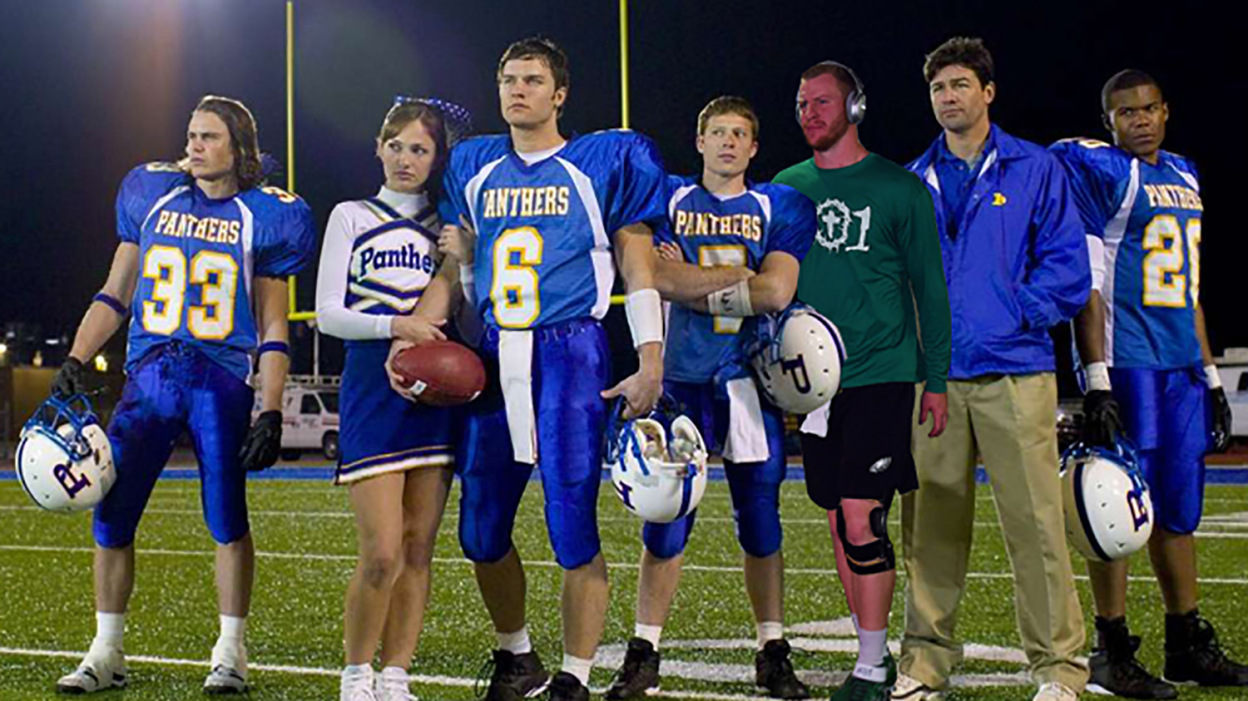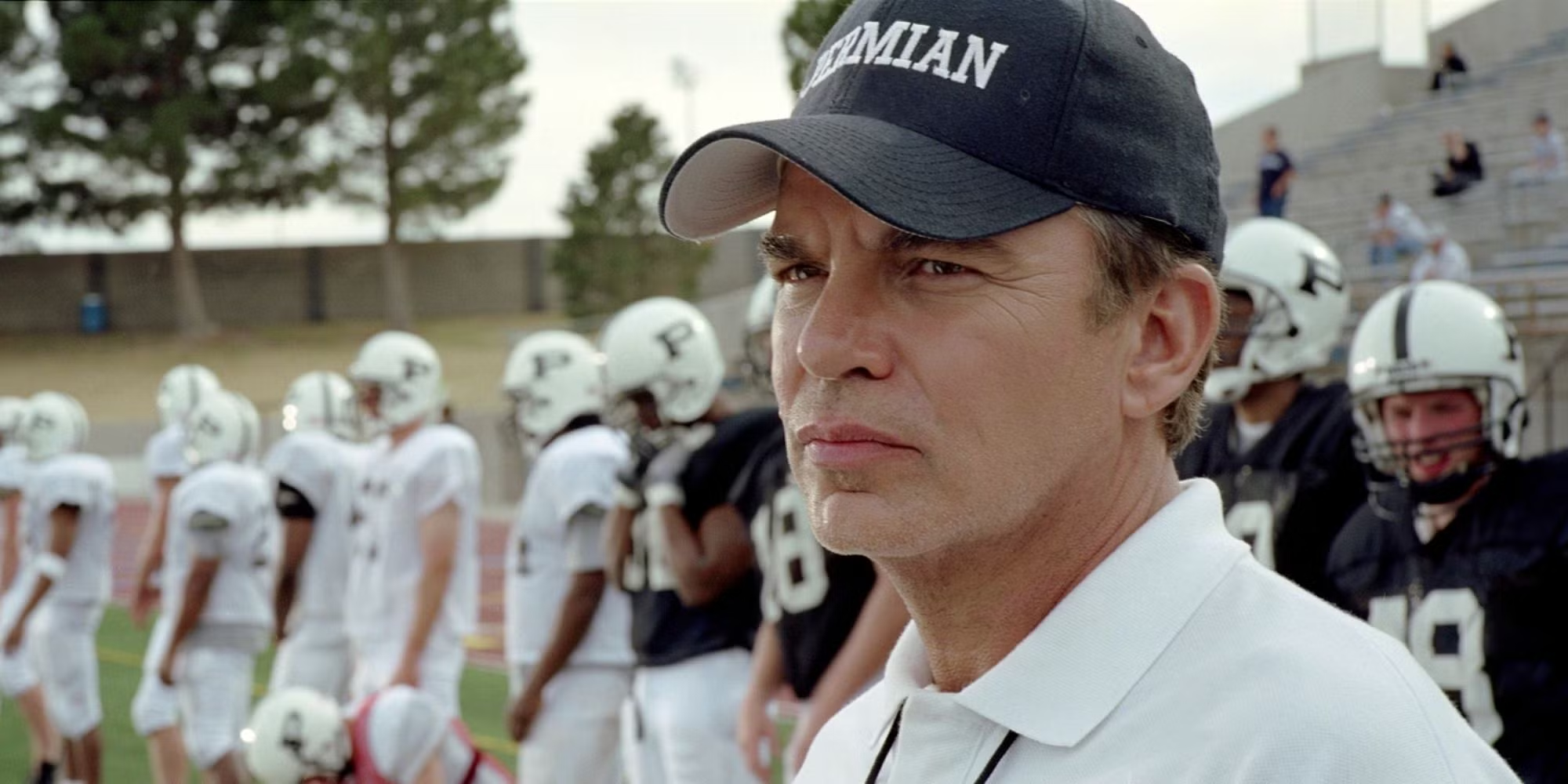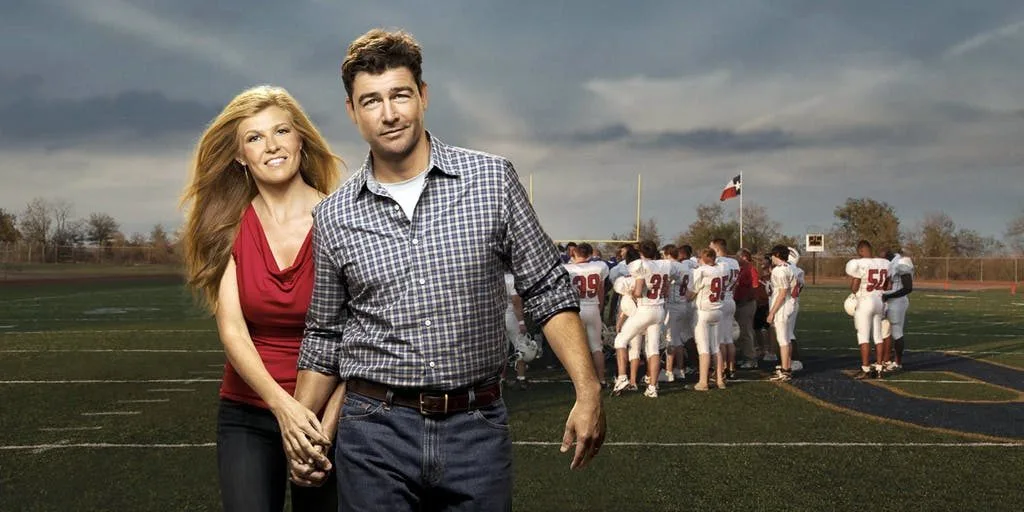
“It was in Odessa that I found those Friday night lights, and they burned with more intensity than I ever imagined… As someone later described it, those lights become an addiction if you live in a place like Odessa…As I stood in that beautiful stadium on the plains week after week, it became obvious that these kids held the town on their shoulders.” — H.G. Bissinger, Friday Night Lights: A Town, a Team and a Dream (1990)
If the conversation is about the most significant and enduring book ever published about high school football, the universally acknowledged GOAT is H.G. Bissinger’s Friday Night Lights.
When we’re debating the best movies about high school football, my vote goes to Peter Berg’s adaptation of “FNL” (2004), just ahead of “All the Right Moves” (1983) and “Remember the Titans” (2000) and light-years ahead of the admittedly entertaining but borderline cartoonish “Varsity Blues” (1999).
As for TV series in this category, let’s broaden the discussion to include series covering all sports, at any level. I have a fond place in my memory bank for “The White Shadow” (1978-1981), and I loved “Ted Lasso” so much that I’m cautiously optimistic about the somewhat surprising news of a Season 4, even though I thought Season 3 wrapped things up in note-perfect fashion. Still, it’s the television adaptation of “Friday Night Lights” (2006-2011) that has remained atop my rankings of the best TV sports shows ever made.
High school football season is here. Hawaii and Alaska have already begun their 2025 seasons, with the vast majority of states kicking off their campaigns in the third or fourth weeks of August. With that in mind, let’s take a look at the legacy of “Friday Night Lights”—the book, the movie, and the TV show.
The Book
By the fall of 1988, the brilliant, then 34-year-old H.G. “Buzz” Bissinger was already a star journalist. Bissinger had won the Pulitzer Prize for investigative reporting while writing for the Philadelphia Inquirer, and he made another big splash with a Vanity Fair article titled “Shattered Glass,” an exposé of the fabulist catalog of work by Stephen Glass. (Writer/director Billy Ray’s adaptation of that piece was one of the best films of 2003.)
Bissinger spent a year in Odessa, TX, and immersed himself in the football-crazed community—and the result was the sensational bestseller Friday Night Lights, told in the “New Journalism” style pioneered by the likes of Truman Capote, Hunter S. Thompson, and Gay Talese. The book was about so much more than high school sports; Bissinger took us inside a West Texas community where solid, small-town values were stressed—but racism was prevalent, and football was given priority over academics, with the locals placing an inordinate amount of importance on the Friday night gridiron performances of a bunch of 17-year-olds.
The most tragic figure is the star running back Boobie Miles, who seems bound for Division I and perhaps even NFL greatness, until he suffers a brutal injury in a preseason scrimmage. At a time when Boobie most needed the support of the community, the easy grades teachers were handing him disappeared (at a time when education required to be stressed), and some members of the coaching staff reportedly made cruel and racist jokes about Boobie being useless. Even in the most tragic of passages, there is a poetry to Bissinger’s narrative, and this is a work of complexity and subtlety. He includes positive portrayals of head coach Gary Gaines and several players, including Brian Chavez, Ivory Christian, and Brian Winchell, but he never shies away from showing us the darkest side of those Friday night lights.
(Sidebar: Over the years, Bissinger provided financial and emotional support for the struggling Miles and published a 34-page afterword titled “After Friday Night Lights” in 2012 that detailed their relationship–but to no avail. Miles has made a mess of his own life and has seriously harmed others; he has been convicted of multiple crimes and is currently serving a 13-year prison sentence.)

The Movie
Rewatching director Peter Berg’s 2004 adaptation of Bissinger’s book (Berg co-wrote the screenplay with David Aaron Cohen), I was struck by the gritty authenticity of the football sequences, whether it was preseason practices, weight room sessions, or the climactic championship game at the Astrodome. (Berg wisely kept the story planted in the past, capturing the atmosphere of the Odessa of the late 1980s.) In subsequent films like “Battleship” and “Lone Survivor,” Berg and the talented cinematographer Tobias A. Schliessler would sometimes overdo it with the whip-around, herky-jerky camera moves. Still, on their first collaboration with “FNL,” the style is just slick yet raw enough to create a docudrama effect without being too showy.
Although Berg had to jettison background historical passages, streamline storylines and nudge facts around to winnow a 357-page tome down to a 118-minute movie, the fictionalized portrayals of Coach Gary Gaines (Billy Bob Thornton), Mike Winchell (Lucas Black) and Boobie Miles (Derek Luke), among others, feel true to the spirit of the book. Derek Luke is electric as Boobie, who talks about himself in the third person and is more concerned with personal glory than team success, until he suffers that horrific injury. When Boobie insists to his coach that he’s ready to return for an October game against Midland, he immediately goes down again, this time for good. (Gaines takes one look at the hurting Boobie on the sidelines, walks away, and bluntly states, “He’s done.”)
Another compelling storyline involves the fumble-prone running back Donny Billingsley (Garret Hedlund, terrific) and his alcoholic and abusive father, Charlie (a menacingly good Tim McGraw), who wears and displays his state championship ring as if it represents the most important accomplishment in his life—which, sadly, is true.
At halftime of the climactic game against the heavily favored, physically dominant Dallas Carter team, Thornton’s Coach, Gaines, sums up a reality about high-stakes high school football that rings true to this day: “You got two more quarters, and that’s it… Most of you have been playing this game for 10 years. You’ve got two more quarters, and after that, most of you will never play this game again for as long as you live.” (I remember hearing my coach at Thornridge High School giving a version of that same speech before the final game of my senior season.) Little wonder that even though these kids are playing a game they truly love, they often seem to forget to inhale the joy of it all.

The TV Show
As we all know, Ben Affleck starred in the NBC drama series that was inspired by Bissinger’s book. Wait, what?
“Against the Grain” (1993), featuring John Terry as high school coach Ed Clemons, and Affleck as his son, the hunky young football player Joe Willie Clemons, was loosely based on Friday Night Lights. It lasted just eight weeks before it was permanently sacked, and quickly forgotten.
Onto the main event. When Peter Berg and showrunner Jason Katims brought “Friday Night Lights” to NBC in 2006, it marked the relatively rare occurrence of a book becoming a movie and then a TV show, with “M*A*S*H” arguably the most famous example. (Other notable titles: “The Ghost and Mrs. Muir,” Tom Clancy’s Jack Ryan stories, “The Dead Zone,” and “Snowpiercer.”)
With W.G. Snuffy Walden creating the iconic, slow-build, chills-inducing opening anthem—it’s a Top 10 TV theme for me—that sets the tone for the blending of sports and family drama, “Friday Night Lights” was almost entirely fictionalized, and it softened some of the harsher themes explored in the book and the film. We spent at least as much time following the domestic arcs of the various nuclear families as we did on the football scenes–but that’s why it appealed to some non-sports fans as well as us football nerds. Kyle Chandler and Connie Britton created one of the most believable and empathetic couples television has ever seen in Eric and Tami Taylor, with an underappreciated Aimee Teagarden doing emotionally charged work as their teenage daughter Julie. (Britton had little to do as Coach Gaines’ wife Sharon in “Friday Night Lights” the movie, but she was a formidable co-lead on the TV show.)
The football scenes were well-choreographed, even if there were far too many games decided on the final play, and we were emotionally invested from the get-go, due to the stellar performances by Scott Porter as the star quarterback Jason Street, who suffers a paralyzing injury in the pilot episode; Zach Gilford as the aw-shucks backup QB Matt Saracen, Gaius Charles as Brian “Smash” Williams; Taylor Kitsch as the troubled anti-hero Tim Riggins, and, later on, Michael B. Jordan as Vince Howard. (The insanely talented cast also included Jesse Plemons and Adrienne Palicki, and would expand to include blazing talents such as Aldis Hodge and Jurnee Smollett. Even though most of the actors playing high schoolers were too old for the part, at least the storylines would have some students graduating while others rotated in.)
The TV version of “FNL” would sometimes venture into lurid territory (e.g. Plemons’ Landry killing the stalker of Palicki’s Tyra, and the two of them conspiring to cover up the crime). But on balance, the series did a stellar job of tackling issues of race, economic class, crime, domestic strife, healthcare, school board politics, and, yes, the overemphasis on high school football in small-town America. Over five seasons, first on NBC and then on DirecTV’s 101 Network, “Friday Night Lights” struggled to find a large audience, but it was critically acclaimed—and dearly embraced by those of us who loved it. In the film version of “FNL,” Coach Gaines says to his team, “Can you live in [the] moment, as best you can, with clear eyes and love in your heart? With joy in your heart… Boys, my heart is full. My heart’s full.”
On TV, Coach Taylor’s mantra was, “Clear Eyes, Full Heart, Can’t Lose.” Sentimental as it might sound, the story of “Friday Night Lights,” warts and all, has cleared many an eye and filled many a heart. It is a football story, an American story, a story that holds up a mirror to society, and it rings as true and insightful in 2025 as it did in 1998 and again in the 2000s.
Source link

